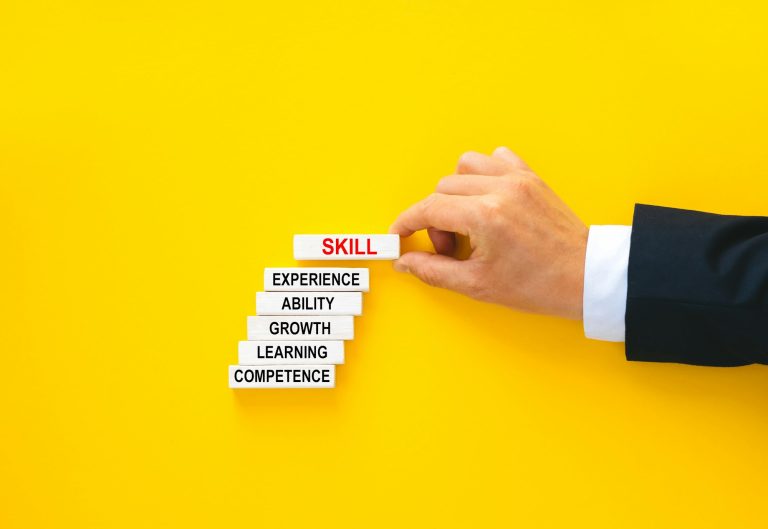In today’s rapidly evolving business landscape, understanding and leveraging your team’s skills is more crucial than ever. A well-executed skill survey can be the key to unlocking your organization’s hidden potential, driving growth, and staying competitive. This comprehensive guide will walk you through the process of conducting an effective skill survey, from preparation to action.
Understanding the Importance of Skill Surveys
Before diving into the how-to, let’s explore why skill surveys are a valuable tool for modern organizations:
- Strategic Workforce Planning: By identifying the skills your team possesses and those they lack, you can make informed decisions about hiring, training, and resource allocation.
- Talent Retention: Employees who feel their skills are recognized and developed are more likely to stay with your organization. In fact, companies with comprehensive skill management programs have been shown to have 37% higher productivity.
- Competitive Advantage: Understanding your team’s capabilities allows you to leverage strengths and address weaknesses, giving you an edge in the market.
- Targeted Professional Development: Skill surveys provide a roadmap for personalized learning and development initiatives, ensuring your training budget is spent effectively.
Preparing for Your Skill Survey
The success of your skill survey largely depends on the groundwork you lay. Here’s how to prepare effectively:
- Set Clear Objectives: Define what you want to achieve with the survey. Are you looking to identify skill gaps? Plan for future projects? Improve team allocation? Having clear goals will guide your entire process.
- Identify Key Stakeholders: Determine who needs to be involved in the survey process. This typically includes HR professionals, team leaders, and senior management.
- Determine Scope and Timeline: Decide which teams or departments will be included in the survey and set a realistic timeline for completion.
- Allocate Resources: Ensure you have the necessary tools, time, and personnel to conduct the survey and analyze the results.
Did you know? 92% of successful skill surveys have clearly defined objectives. Taking the time to prepare thoroughly sets the foundation for actionable results.
Designing Effective Skill Survey Questions
The heart of your skill survey lies in its questions. Here’s how to design questions that elicit valuable insights:
- Balance Hard and Soft Skills: Include questions that assess both technical abilities and soft skills like communication and leadership.
- Use a Mix of Question Types: Combine multiple-choice, rating scales, and open-ended questions. Surveys with a mix of question types yield 28% more actionable data.
- Ensure Clarity and Relevance: Each question should be easy to understand and directly related to the skills you’re assessing.
- Consider Self-Assessment and Manager Input: Where possible, include both self-assessment questions and input from managers for a more rounded view.
Here are some example questions to get you started:
- On a scale of 1-5, how would you rate your proficiency in [specific skill]?
- How often do you use [specific skill] in your current role?
- Describe a situation where you successfully applied [specific skill].
Implementing Your Skill Survey
With your questions ready, it’s time to put your survey into action:
- Choose the Right Platform: Select a survey tool that’s user-friendly and allows for easy data analysis. Options range from specialized HR software to general survey platforms like SurveyMonkey or Google Forms.
- Communicate Clearly: Explain the purpose of the survey to participants, emphasizing how it will benefit both them and the organization. Clear communication can increase employee participation by up to 45%.
- Ensure Confidentiality: Assure participants that their individual responses will be kept confidential to encourage honest feedback.
- Set a Reasonable Timeframe: Give employees enough time to complete the survey thoughtfully, but set a clear deadline to ensure completion.
- Send Reminders: Gentle reminders can help increase participation rates.
Analyzing and Acting on Skill Survey Results
Collecting data is just the beginning. The real value comes from how you interpret and act on the results:
- Visualize the Data: Use charts and graphs to identify patterns and trends in your team’s skills.
- Conduct a Gap Analysis: Compare your team’s current skill levels with those required for optimal performance or future goals.
- Create Individual Development Plans: Use the survey results to craft personalized learning paths for employees.
- Inform Strategic Decisions: Let the data guide decisions about hiring, project allocation, and organizational structure.
- Share Relevant Insights: Provide appropriate feedback to teams and individuals, focusing on how the results will be used for development.
Organizations that act on survey results see a 24% increase in employee engagement (placeholder statistic). Your actions following the survey are crucial in demonstrating its value to your team.
Transforming Insights into Action: Your Skill Survey Roadmap
Conducting a skill survey is not a one-time event, but an ongoing process of discovery and development. Regular assessments allow you to track progress and adapt to changing skill requirements in your industry.
Remember:
- Skill surveys are powerful tools for driving organizational growth when used effectively.
- The insights gained can empower employees through targeted development opportunities.
- Acting on the results is crucial for realizing the full benefits of your skill survey.
Ready to unlock your team’s potential? Start planning your skill survey today. Download our customizable skill survey template to jumpstart your process, and don’t forget to share your experiences or questions in the comments below.
By leveraging the power of skill surveys, you’re not just assessing your team – you’re paving the way for a more skilled, engaged, and productive workforce. Here’s to your organization’s continued growth and success!

